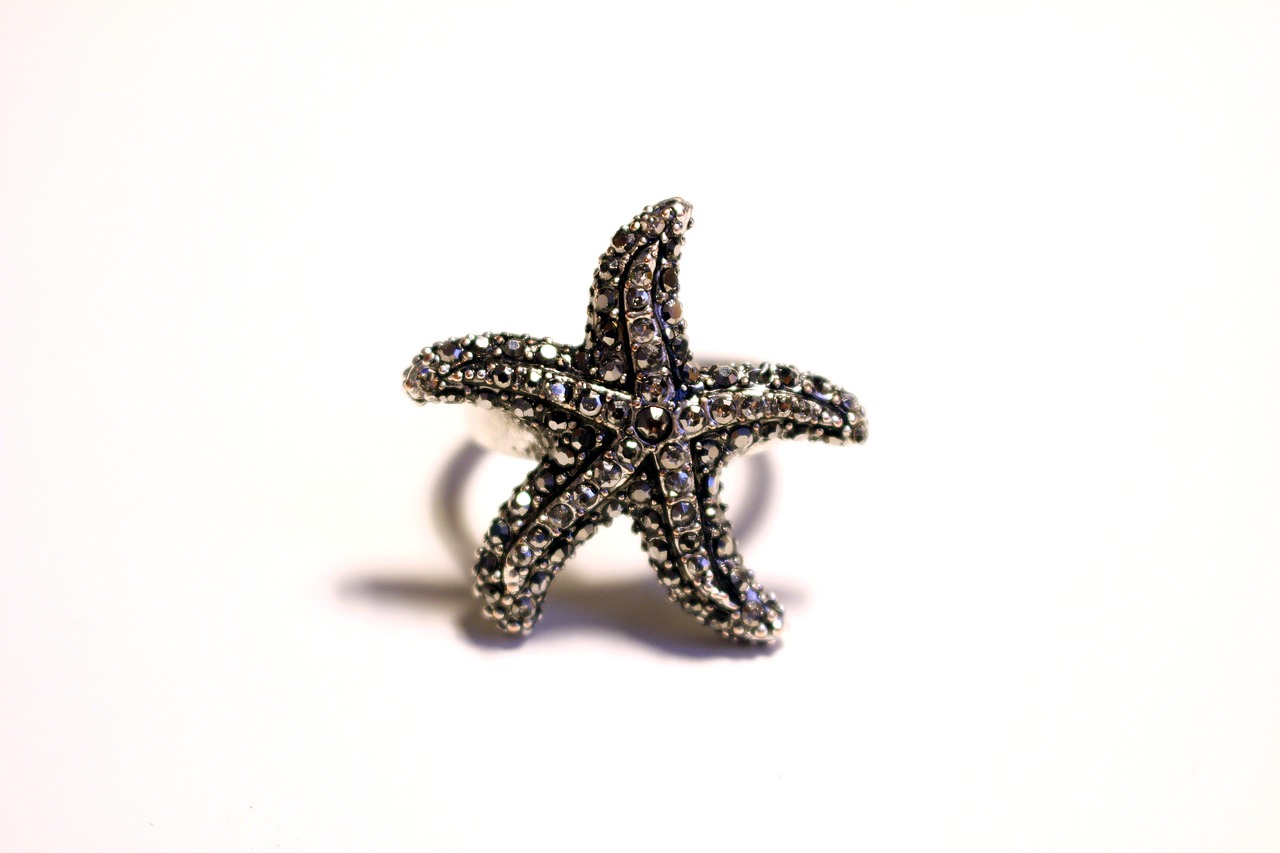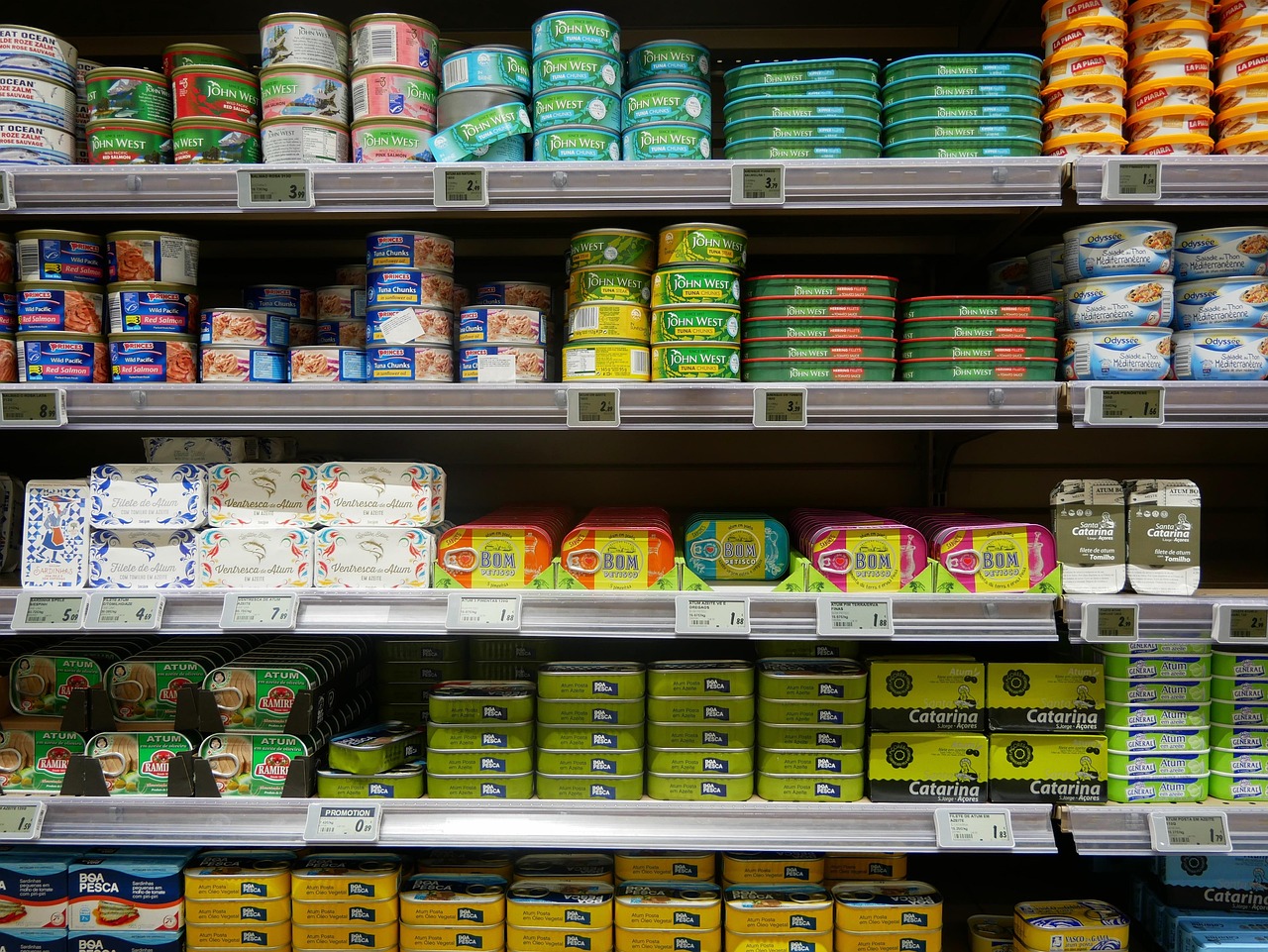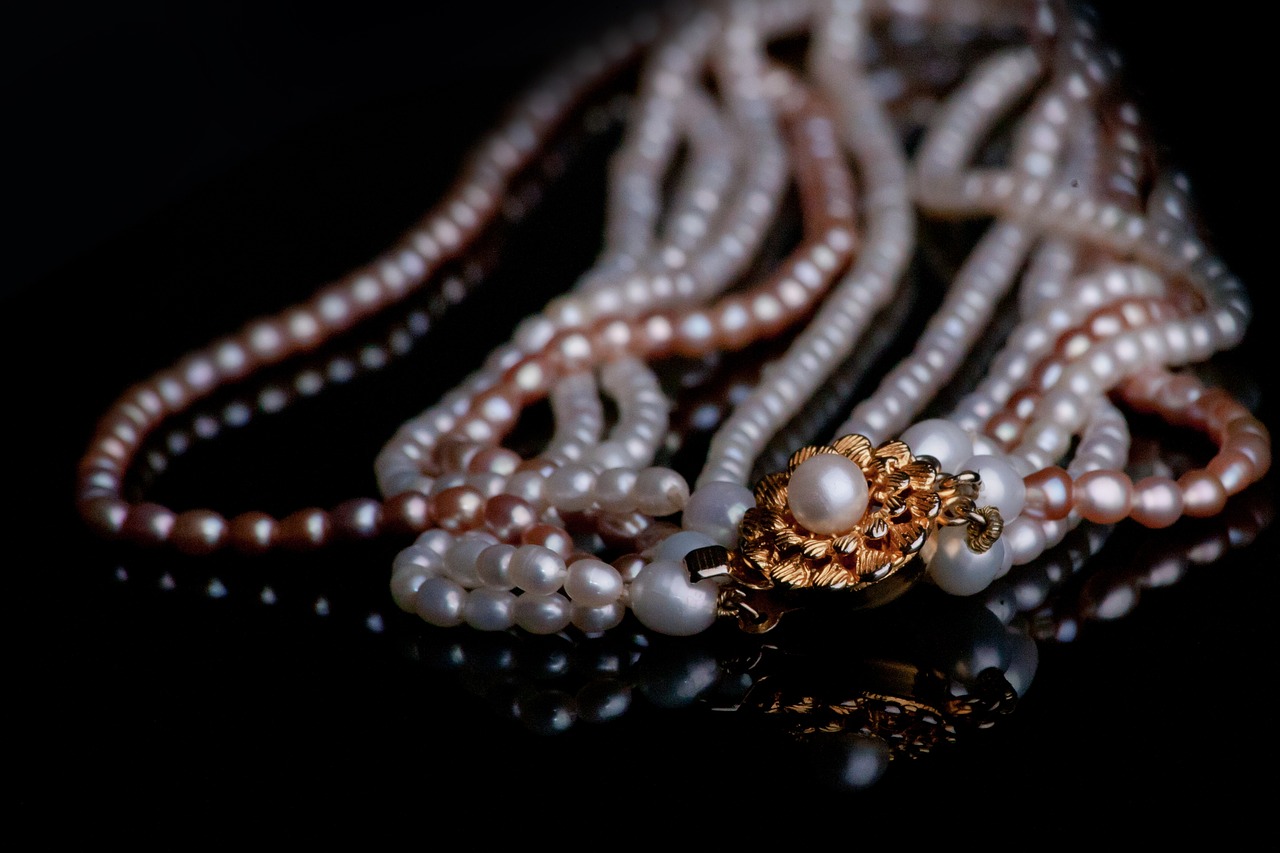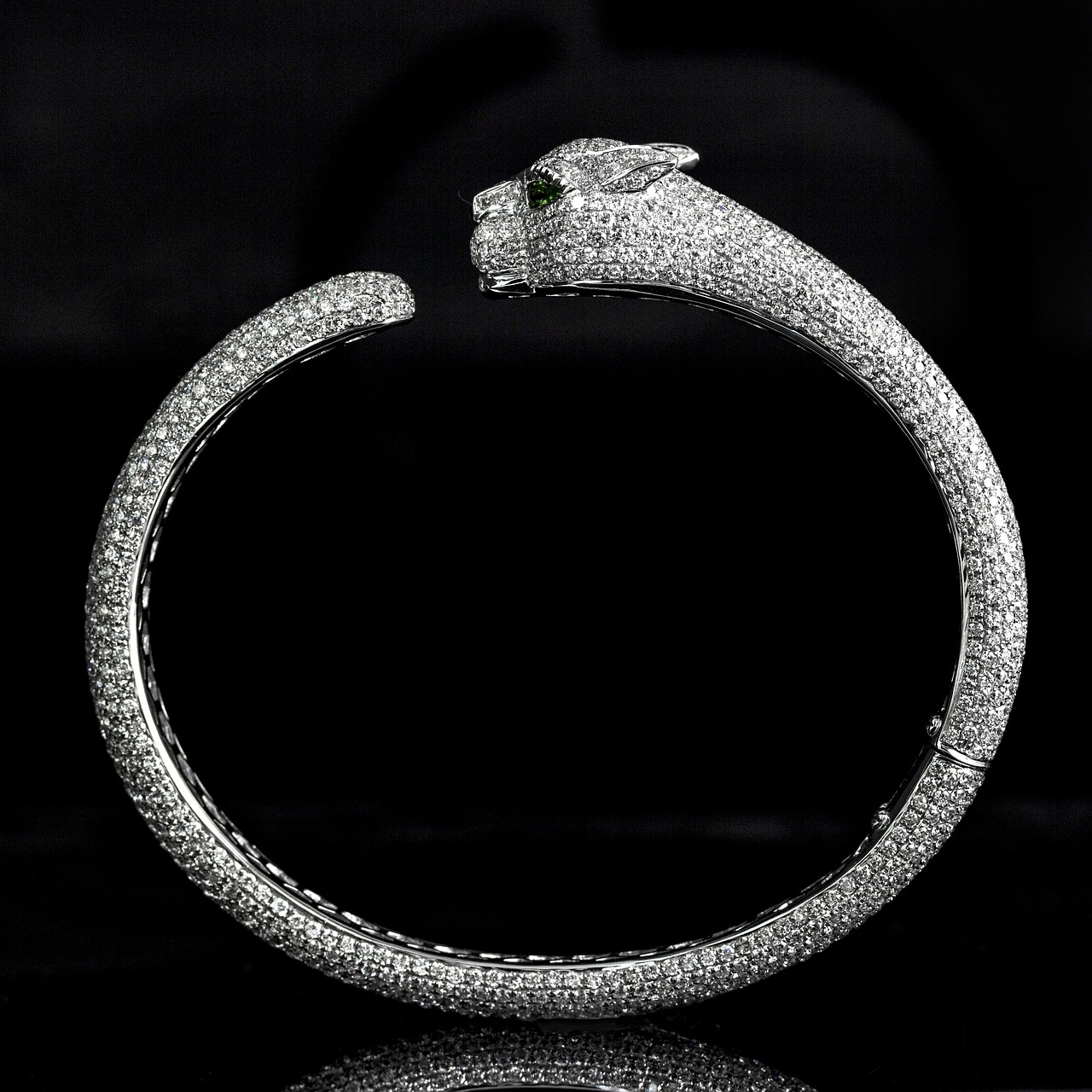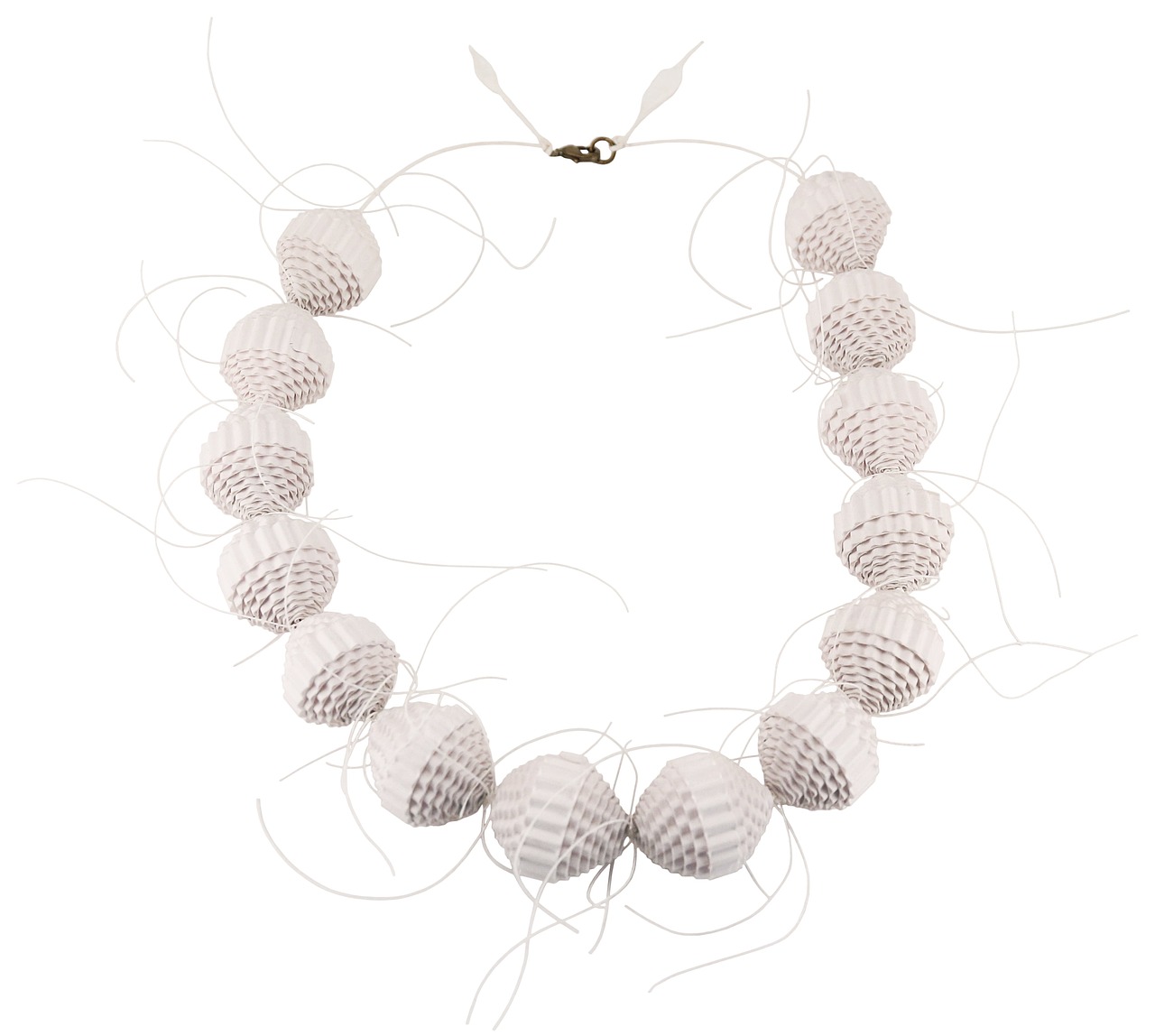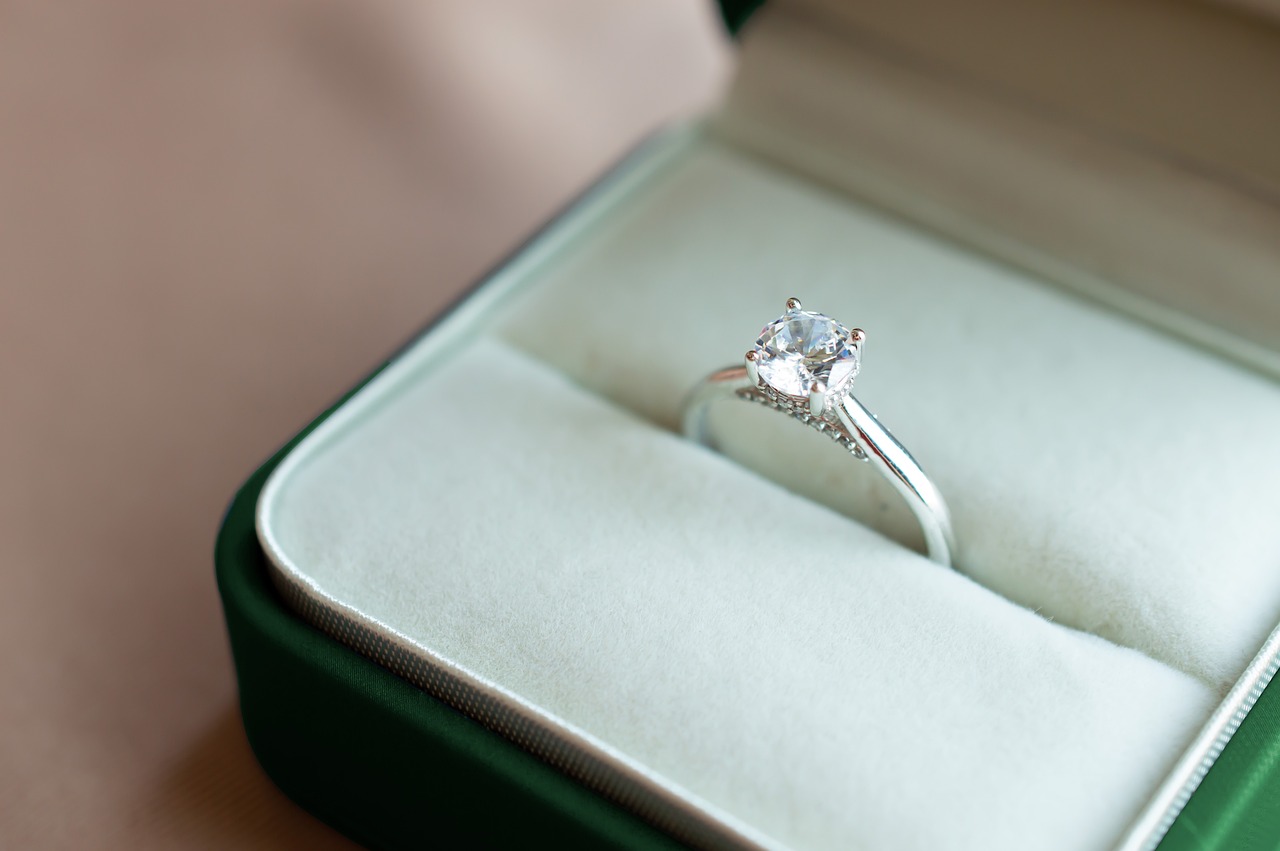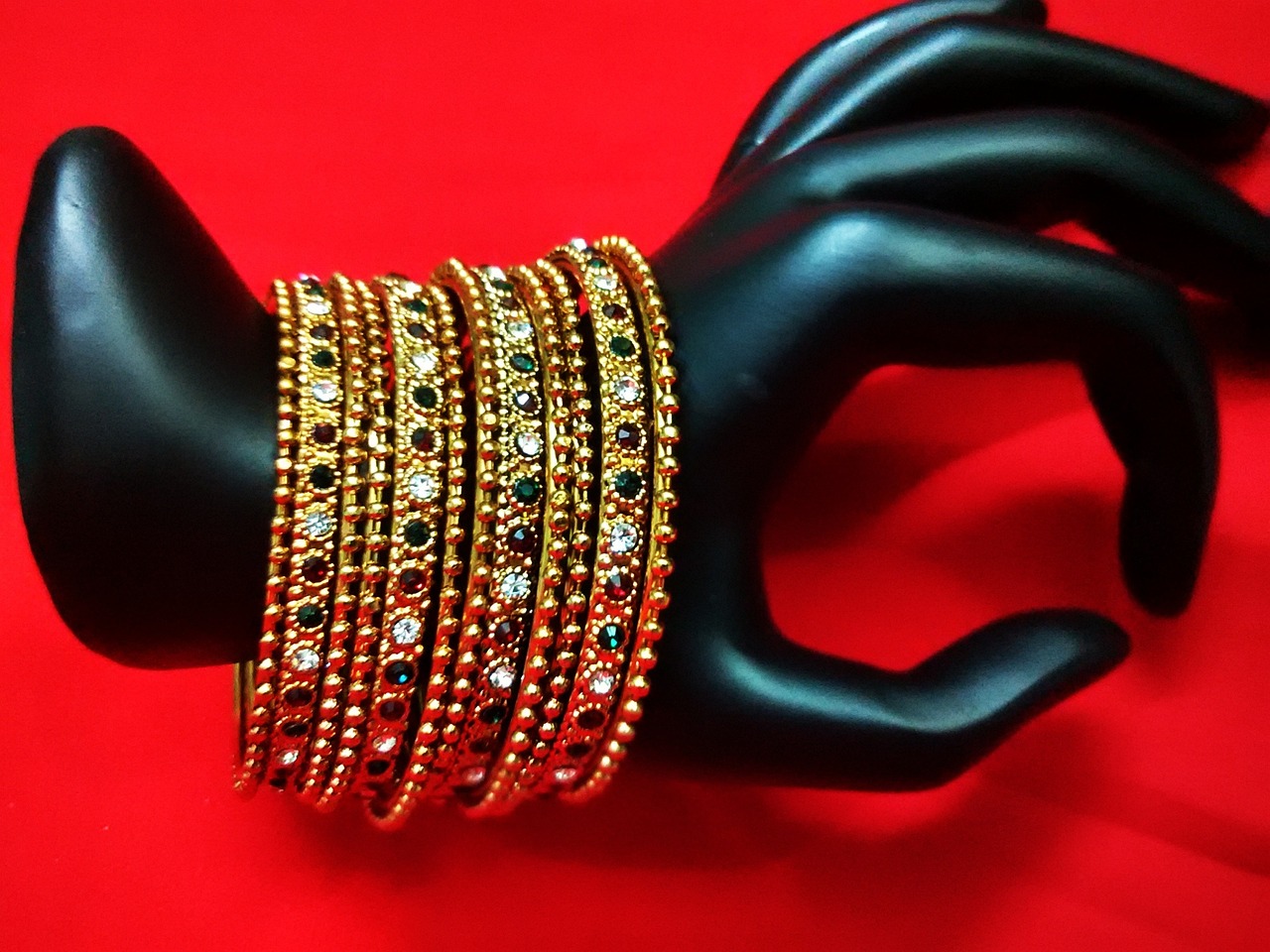This article delves into the key factors that contribute to the appreciation of jewelry value, providing insights into market trends, materials, and craftsmanship that influence investment potential.
What Are the Key Factors Influencing Jewelry Value?
Understanding the primary factors that determine jewelry value is essential for collectors and investors. These factors include:
- Materials
- Craftsmanship
- Brand Reputation
- Market Demand
How Do Materials Affect Jewelry Value?
The type of materials used in jewelry significantly impacts its value. Precious metals and gemstones are the most sought-after, with their rarity and quality playing crucial roles in valuation.
Why Are Precious Metals Important?
Precious metals like gold, silver, and platinum are foundational to jewelry value. Their intrinsic worth and historical significance elevate their market prices, making them a reliable investment.
What Is the Role of Gold in Jewelry Valuation?
Gold’s purity, measured in karats, directly affects its value. Higher karat gold is more valuable due to its greater gold content, making it a preferred choice for luxury pieces.
How Does Silver Compare to Gold?
While silver is less expensive than gold, its value can appreciate based on market demand and rarity. Vintage silver pieces often command higher prices due to their craftsmanship and historical significance.
What Impact Do Gemstones Have on Jewelry Value?
Gemstones are central to jewelry valuation. Their rarity, cut, clarity, and color determine their market worth, making them a critical component of investment-grade pieces.
How Does Craftsmanship Influence Jewelry Value?
The level of craftsmanship in jewelry creation can significantly enhance its value. Fine detailing, unique designs, and skilled artistry contribute to a piece’s desirability and market price.
What Defines High-Quality Craftsmanship?
High-quality craftsmanship is characterized by attention to detail, precision, and the use of superior techniques. Pieces made by renowned artisans often appreciate more due to their perceived value.
How Do Unique Designs Impact Value?
Unique and innovative designs can set a piece apart from others, making it more desirable. Limited edition or custom-made jewelry often appreciates more due to its exclusivity.
What Role Does Brand Reputation Play in Jewelry Value?
The brand behind a piece of jewelry can significantly influence its value. Established brands often command higher prices due to their reputation, quality assurance, and customer loyalty.
How Do Luxury Brands Affect Market Prices?
Luxury brands, such as Tiffany & Co. and Cartier, have a strong influence on market prices. Their iconic status and high-quality craftsmanship make their pieces highly sought after.
Can Emerging Brands Compete in Value?
Emerging brands can compete by offering unique designs and high-quality materials. As they gain recognition, their pieces may appreciate in value, attracting collectors and investors.
What Is the Impact of Market Trends on Jewelry Value?
Market trends play a crucial role in determining jewelry value. Economic conditions, fashion trends, and consumer preferences can lead to fluctuations in demand and pricing.
How Do Economic Conditions Affect Jewelry Demand?
Economic stability can increase consumer confidence, leading to higher jewelry sales. Conversely, economic downturns may reduce demand, impacting the overall value of jewelry in the market.
What Trends Are Currently Shaping the Jewelry Market?
Current trends, such as sustainable and ethically sourced materials, are shaping consumer preferences. Jewelry that aligns with these values often sees increased demand and appreciation in value.
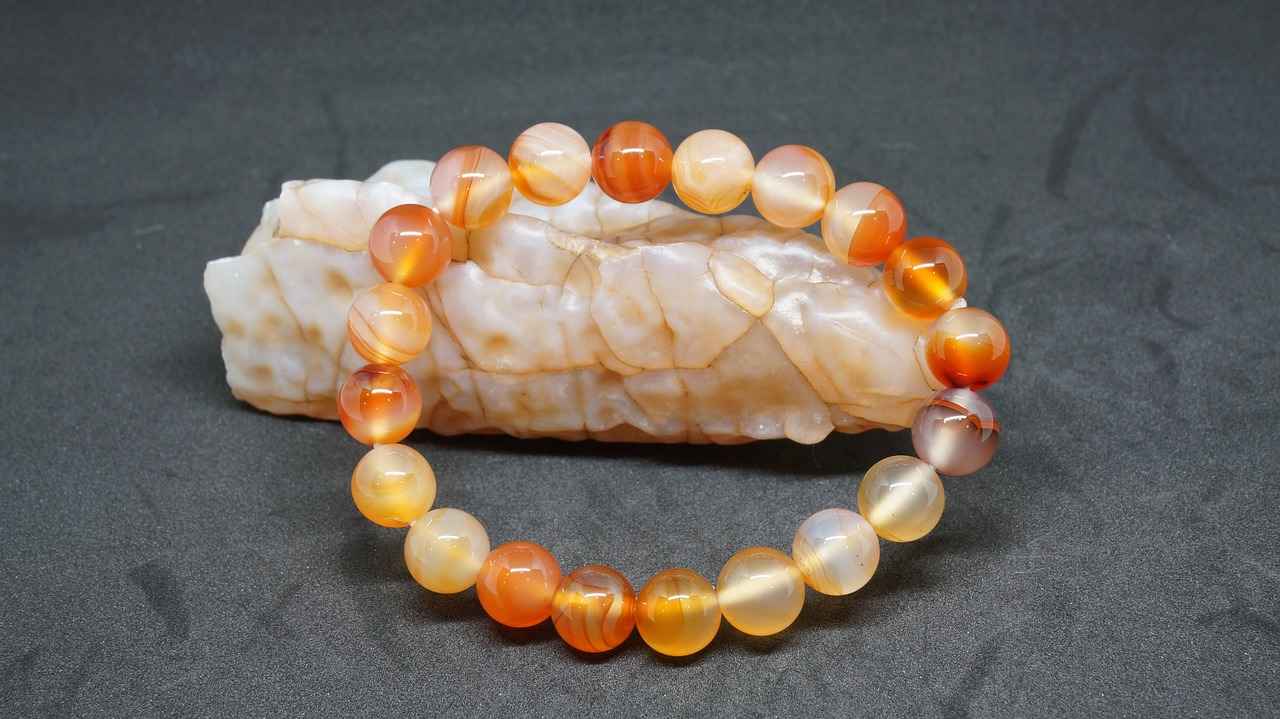
What Are the Key Factors Influencing Jewelry Value?
Understanding the primary factors that determine jewelry value is essential for collectors and investors alike. The intricacies of jewelry valuation encompass various elements that contribute to its overall worth. This article delves into the key factors influencing jewelry value, including materials, craftsmanship, brand reputation, and market demand.
Jewelry is not just a decorative item; it is often viewed as an investment. The value of jewelry is determined by several key factors:
- Materials
- Craftsmanship
- Brand Reputation
- Market Demand
The type of materials used in jewelry significantly impacts its value. Precious metals and gemstones are the most sought-after, with their rarity and quality playing crucial roles in valuation. For instance, gold, silver, and platinum are highly valued for their intrinsic worth.
Precious metals like gold, silver, and platinum form the foundation of jewelry value. Their intrinsic worth and historical significance elevate their market prices, making them a reliable investment. Gold, for instance, is often preferred due to its durability and aesthetic appeal.
Gemstones are central to jewelry valuation. Their rarity, cut, clarity, and color determine their market worth. For example, diamonds are highly prized for their brilliance and are considered a benchmark for evaluating other gemstones.
The level of craftsmanship in jewelry creation can significantly enhance its value. Fine detailing, unique designs, and skilled artistry contribute to a piece’s desirability and market price. High-quality craftsmanship is characterized by attention to detail and the use of superior techniques.
Jewelry pieces made by renowned artisans often appreciate more due to their perceived value. Unique designs can set a piece apart, making it more desirable. Limited edition or custom-made jewelry often appreciates more due to its exclusivity.
The brand behind a piece of jewelry can significantly influence its value. Established brands often command higher prices due to their reputation, quality assurance, and customer loyalty. Luxury brands, such as Tiffany & Co. and Cartier, have a strong influence on market prices.
Emerging brands can compete by offering unique designs and high-quality materials. As they gain recognition, their pieces may appreciate in value, attracting collectors and investors.
Market trends play a crucial role in determining jewelry value. Economic conditions, fashion trends, and consumer preferences can lead to fluctuations in demand and pricing. For example, current trends like sustainable and ethically sourced materials are shaping consumer preferences.
Economic stability can increase consumer confidence, leading to higher jewelry sales. Conversely, economic downturns may reduce demand, impacting the overall value of jewelry in the market.
Jewelry that aligns with values like sustainability often sees increased demand and appreciation in value. As consumers become more conscious of their purchases, the market continues to evolve, reflecting these changing priorities.

How Do Materials Affect Jewelry Value?
When it comes to the world of jewelry, the materials used play a pivotal role in determining its overall value. Understanding how these materials contribute to valuation is essential for both collectors and investors alike. In this section, we will delve into the significance of various materials, focusing on precious metals and gemstones, and explore how their characteristics influence market demand.
The most sought-after materials in jewelry are precious metals and gemstones. Each of these materials carries inherent qualities that not only affect their aesthetic appeal but also their investment potential.
Precious metals such as gold, silver, and platinum are foundational elements in the jewelry industry. Their rarity and intrinsic worth elevate their market prices significantly. For instance:
- Gold: Known for its historical significance and versatility, gold is often seen as a safe investment. The purity of gold, measured in karats, directly correlates with its value; higher karat gold contains a greater amount of pure gold.
- Silver: While generally less expensive than gold, silver’s value can appreciate based on market demand and its rarity. Vintage silver pieces, especially those with unique craftsmanship, can command higher prices.
- Platinum: This metal is rarer than gold and silver, which contributes to its higher price point. Its durability and resistance to tarnishing make it a favored choice for high-end jewelry.
Gemstones are another critical component of jewelry valuation. The rarity, cut, clarity, and color of gemstones are fundamental factors that determine their market worth. For example:
- Diamonds: Often considered the ultimate gemstone, diamonds are valued based on the “Four Cs”: cut, color, clarity, and carat weight. High-quality diamonds can appreciate significantly over time.
- Emeralds: Known for their vibrant green color, emeralds are valued for their rarity and are often more expensive than diamonds of similar size due to their unique characteristics.
- Sapphires: Available in various colors, sapphires are prized for their beauty and durability. The most sought-after sapphires are the deep blue varieties, which can fetch high prices in the market.
The level of craftsmanship in jewelry creation can significantly enhance the value of the materials used. Fine detailing and unique designs can elevate a piece’s desirability, making it more attractive to collectors and investors. High-quality craftsmanship is characterized by:
- Attention to Detail: Exceptional craftsmanship involves meticulous attention to every aspect of the piece, from the setting of gemstones to the finishing touches.
- Use of Superior Techniques: Techniques such as hand engraving or intricate metalwork can set a piece apart, adding to its overall value.
- Signature Styles: Pieces created by renowned artisans often appreciate more due to their perceived value and uniqueness.
The demand for specific materials can fluctuate based on current market trends, economic conditions, and consumer preferences. For instance, a growing interest in sustainable and ethically sourced materials is shaping the jewelry market. Jewelry made with these values in mind often sees increased demand and appreciation in value.
In summary, the materials used in jewelry—ranging from precious metals to exquisite gemstones—are crucial in determining its value. Understanding these factors can empower collectors and investors to make informed decisions in the jewelry market.
Why Are Precious Metals Important?
When it comes to the world of jewelry, precious metals such as gold, silver, and platinum play a pivotal role in determining value. These metals are not only recognized for their physical beauty but also for their intrinsic worth and historical significance. Understanding why these metals are so important can provide valuable insights for both collectors and investors.
The value of precious metals is influenced by a variety of factors, including rarity, market demand, and their industrial applications. Gold, for example, has been cherished for centuries, serving as a symbol of wealth and power. Its limited supply and high demand in various sectors, including electronics and dentistry, contribute to its elevated market price.
Gold is often viewed as the benchmark for precious metals. Its purity, measured in karats, directly influences its value. Higher karat gold, which contains a greater proportion of pure gold, is more desirable and thus commands a higher price. In contrast, silver, while less expensive, can also appreciate in value, especially vintage pieces that showcase exceptional craftsmanship.
Despite being more affordable than gold, silver holds its own in the market. The value of silver can fluctuate based on market trends and demand. For instance, silver is increasingly used in technological applications, which has led to a surge in its demand. Furthermore, vintage silver jewelry often appreciates due to its historical significance and the artistry involved in its creation.
Platinum is another precious metal that is highly valued in the jewelry market. Known for its durability and luster, platinum is often used in high-end pieces. Its rarity—much rarer than gold—also contributes to its high price point. Additionally, platinum’s hypoallergenic properties make it a preferred choice for those with sensitive skin.
The prices of precious metals are not static; they are influenced by various market dynamics. Economic conditions, geopolitical stability, and consumer preferences all play a role. For example, during times of economic uncertainty, investors often turn to gold as a safe haven, driving up its price. Conversely, in a stable economy, the demand for gold may decrease, leading to lower prices.
Experts predict that the value of precious metals will continue to rise in the coming years. With increasing interest in sustainable and ethically sourced materials, the demand for responsibly mined precious metals is expected to grow. Furthermore, the ongoing advancements in technology may create new applications for these metals, further enhancing their value.
In summary, precious metals like gold, silver, and platinum are foundational to the jewelry market due to their intrinsic worth, historical significance, and market dynamics. As a reliable investment, understanding these factors can aid collectors and investors in making informed decisions.
What Is the Role of Gold in Jewelry Valuation?
Gold has long been regarded as one of the most valuable materials in the world of jewelry. Its allure, history, and intrinsic value make it a staple for both collectors and casual buyers alike. Understanding the role of gold in jewelry valuation is essential for anyone looking to invest or appreciate the beauty of these pieces.
The purity of gold is measured in karats, with pure gold defined as 24 karats. This measurement indicates the proportion of gold present in an alloy. For example, 18 karat gold consists of 75% gold and 25% other metals, while 14 karat gold contains 58.3% gold. The higher the karat, the more valuable the gold, making it a preferred choice for luxury pieces.
Higher karat gold is more valuable due to its greater gold content, which contributes to its durability and luster. This quality not only enhances the aesthetic appeal of jewelry but also ensures that it retains its value over time. As a result, pieces made from higher karat gold are often considered more desirable, especially among collectors and investors.
- Intrinsic Value: Gold has a long-standing history as a form of currency and wealth storage, making it a reliable investment.
- Market Demand: The demand for gold jewelry remains consistently high, driven by fashion trends and cultural significance.
- Longevity: Gold does not tarnish or corrode, ensuring that jewelry retains its beauty and value over time.
The color of gold jewelry can also influence its market value. While traditional yellow gold remains popular, white gold and rose gold have gained traction in recent years. Each type has its unique appeal, often determined by consumer preferences and fashion trends. However, the underlying purity still plays a crucial role in determining value.
Current trends indicate a growing interest in sustainable and ethically sourced materials, including gold. Consumers are increasingly aware of the environmental and social implications of their purchases. As a result, jewelry that emphasizes sustainability and ethical sourcing is likely to appreciate in value, aligning with modern consumer values.
The craftsmanship and design of gold jewelry can significantly impact its valuation. Pieces that showcase exceptional artistry, intricate detailing, and unique designs often command higher prices. Renowned designers or brands associated with high-quality craftsmanship can elevate the perceived value of their gold jewelry, making it a more attractive investment.
Market demand is a critical factor in determining the value of gold jewelry. Economic conditions, fashion trends, and consumer preferences can lead to fluctuations in demand. For instance, during economic booms, luxury items, including gold jewelry, tend to see increased sales, while economic downturns may lead to reduced consumer spending.
In conclusion, gold’s purity, measured in karats, plays a vital role in its valuation within the jewelry market. Higher karat gold is more valuable due to its greater content and desirability, making it a preferred choice for luxury pieces. Understanding these dynamics can help consumers and investors make informed decisions when purchasing gold jewelry.
How Does Silver Compare to Gold?
When it comes to precious metals, silver and gold are often the most discussed, yet they offer distinct characteristics that affect their value in the jewelry market. Understanding how silver compares to gold is essential for collectors and investors alike.
While both metals are valued for their beauty and rarity, there are several key differences that influence their market performance:
- Price Point: Silver is generally more affordable than gold, making it accessible for a wider range of consumers.
- Market Demand: The demand for silver can fluctuate based on industrial use, while gold is primarily sought after for investment and jewelry.
- Rarity: Gold is rarer than silver, which contributes to its higher price and perceived value.
The value of silver can appreciate significantly based on market demand. As industries evolve and new technologies emerge, the need for silver in electronics and solar panels can drive prices up. Additionally, during economic uncertainty, investors often turn to precious metals as a safe haven, further increasing demand for silver.
Rarity is a fundamental factor in determining the value of any precious metal. Although silver is more abundant than gold, certain vintage silver pieces can command high prices due to their historical significance and craftsmanship. For example, antique silverware or jewelry from renowned artisans often appreciates more than newly minted pieces.
Vintage silver jewelry is often cherished for its craftsmanship and unique designs. The intricate detailing and historical context can make these pieces highly sought after. Collectors are often willing to pay a premium for items that reflect a particular era or style, which adds to their overall value.
Just like gold, the craftsmanship involved in creating silver jewelry can significantly enhance its market value. Pieces crafted by skilled artisans with meticulous attention to detail often fetch higher prices. The uniqueness of the design and the quality of the materials used can make a substantial difference in how much a piece appreciates over time.
Investing in silver can be a lucrative opportunity, but it also comes with its risks. Unlike gold, which has a long-standing reputation as a stable investment, silver’s value can be more volatile. Factors such as economic conditions, industrial demand, and even geopolitical events can cause fluctuations in the price of silver.
Current trends in the jewelry market also play a crucial role in determining the value of silver. With a growing emphasis on sustainability, ethically sourced silver is becoming increasingly popular. This shift in consumer preference can lead to higher demand and appreciation for silver pieces that align with these values.
In conclusion, while silver may be less expensive than gold, its value can appreciate significantly based on market demand, rarity, and craftsmanship. Vintage silver pieces, in particular, often command higher prices due to their unique characteristics and historical significance. By understanding these factors, collectors and investors can make informed decisions about their jewelry investments.
What Impact Do Gemstones Have on Jewelry Value?
Gemstones play a pivotal role in the valuation of jewelry, significantly influencing both aesthetic appeal and market worth. Understanding how gemstones impact jewelry value is crucial for collectors, investors, and enthusiasts alike. This article delves into the factors that determine the value of gemstones, including their rarity, cut, clarity, and color.
The rarity of a gemstone is one of the most critical factors in determining its value. Stones that are difficult to find, such as diamonds, emeralds, and rubies, often command higher prices due to their limited availability. For instance:
- Diamonds: While they are widely known, high-quality diamonds with unique characteristics are rare.
- Emeralds: Often more valuable than diamonds of similar quality due to their scarcity.
- Rubies: The finest rubies can fetch prices that exceed those of diamonds, largely due to their rarity.
The cut of a gemstone refers to how well it has been shaped and faceted, affecting its brilliance and overall appearance. A well-cut gemstone reflects light beautifully, enhancing its visual appeal and value. Factors influencing the cut include:
- Proportions: The dimensions and angles of the gemstone.
- Symmetry: How well the facets align and reflect light.
- Polish: The smoothness of the gemstone’s surface.
A gemstone with an excellent cut can significantly increase its market worth, making it a vital consideration for valuation.
Clarity measures the presence of internal or external flaws, known as inclusions and blemishes, respectively. The clearer the gemstone, the higher its value. For example:
- Flawless Diamonds: These are extremely rare and can command astronomical prices.
- Emeralds: While inclusions are common, those with fewer inclusions are more sought after.
Understanding clarity can help buyers make informed decisions, ensuring they invest in quality pieces.
The color of a gemstone is perhaps the most visually striking factor affecting its value. Gemstones are graded based on hue, tone, and saturation. For instance:
- Diamonds: Colorless diamonds are typically more valuable, but fancy colored diamonds can also fetch high prices depending on their rarity.
- Rubies: The most prized rubies are a deep, vivid red, while lighter shades are less valuable.
- Sapphires: The most sought-after sapphires are a rich blue, but other colors can also be valuable.
Color significantly impacts the desirability and market price of gemstones, making it a key aspect of valuation.
Certification from reputable gemological laboratories can enhance a gemstone’s value. Certificates provide an objective assessment of a gemstone’s quality, including its cut, clarity, color, and carat weight. Buyers often prefer certified stones as they offer assurance regarding authenticity and quality, which can lead to higher market prices.
In summary, gemstones are central to jewelry valuation, with their rarity, cut, clarity, and color determining their market worth. Understanding these factors is essential for anyone looking to invest in or appreciate fine jewelry. By being informed about these elements, collectors and investors can make better decisions, ensuring their investments appreciate over time.
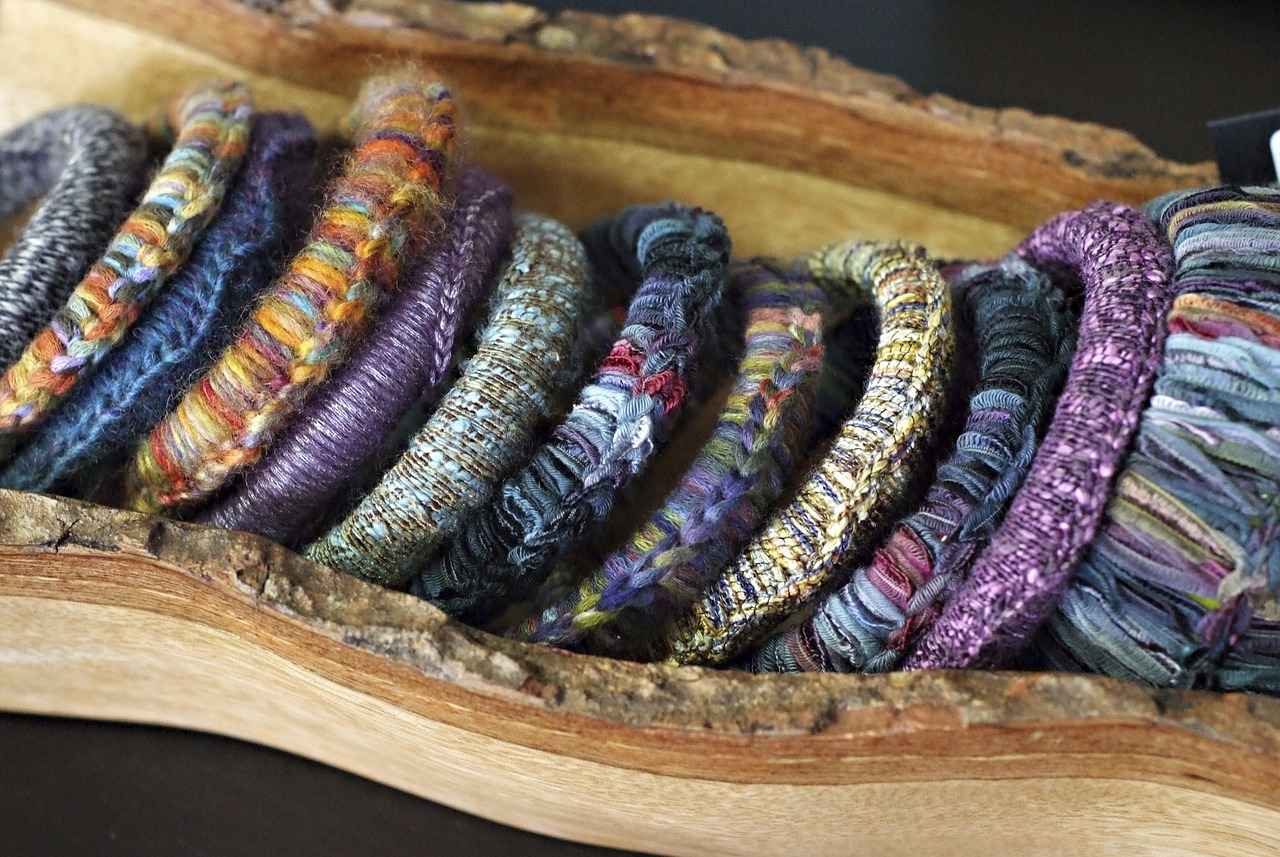
How Does Craftsmanship Influence Jewelry Value?
The world of jewelry is not just about shiny objects; it is also a realm where artistry meets investment. Among the numerous factors that influence the value of jewelry, craftsmanship stands out as a crucial element. Understanding how craftsmanship impacts jewelry value can empower collectors and investors alike.
Exceptional craftsmanship is often defined by attention to detail, precision, and the use of advanced techniques. When artisans pour their skill and creativity into a piece, the result is often a work of art that transcends mere adornment. The level of intricacy in the design and the quality of materials used can significantly elevate a piece’s desirability.
Fine detailing can transform a simple piece into a masterpiece. Intricate designs, such as hand-engraving or filigree work, require a high level of skill and can dramatically enhance the value of the jewelry. Buyers are often willing to pay a premium for pieces that showcase such detailing, as they reflect the dedication and expertise of the craftsman.
Unique and innovative designs are pivotal in setting a piece apart from the crowd. Limited edition or custom-made jewelry often appreciates in value due to its exclusivity. Collectors are drawn to one-of-a-kind pieces that tell a story or embody a unique vision, making them highly sought after in the market.
The artistry involved in jewelry making can significantly influence its market price. Renowned artisans or designers often create pieces that not only serve as accessories but also as expressions of art. The reputation of the artist can add an additional layer of value, as pieces from well-known creators tend to appreciate more over time.
High-quality craftsmanship can create a buzz in the market, driving demand for specific pieces. When consumers recognize the value of skilled artistry, they are more inclined to invest in jewelry that showcases exceptional craftsmanship. This demand can lead to increased market prices, especially for pieces that are well-documented in terms of their creation process.
- Appreciation Potential: Well-crafted jewelry often appreciates more over time compared to mass-produced items.
- Timeless Appeal: Unique designs and quality craftsmanship tend to maintain their allure, making them desirable for generations.
- Emotional Value: Pieces that are well-crafted often carry sentimental value, adding to their worth beyond monetary aspects.
In conclusion, the influence of craftsmanship on jewelry value cannot be overstated. From fine detailing to unique designs, the artistry involved plays a significant role in determining desirability and market price. For collectors and investors, prioritizing craftsmanship can lead to more informed purchasing decisions and ultimately, greater returns on investment.
What Defines High-Quality Craftsmanship?
High-quality craftsmanship in jewelry is not merely about the final product; it encompasses a meticulous process that transforms raw materials into exquisite pieces of art. This craftsmanship is marked by a commitment to detail, precision in execution, and the application of superior techniques that have often been passed down through generations.
Attention to detail is the cornerstone of high-quality jewelry making. Skilled artisans dedicate countless hours to perfecting every facet of a piece, ensuring that each element harmonizes with the overall design. This meticulous approach not only enhances the aesthetic appeal but also contributes to the durability and longevity of the jewelry. Every tiny detail matters, as it can significantly affect the final valuation of the piece.
Various techniques play a pivotal role in defining high-quality craftsmanship. Some of these include:
- Hand-Finishing: This involves manual polishing and detailing, giving each piece a unique touch.
- Stone Setting: Expert stone setting ensures that gemstones are securely placed and showcased beautifully, enhancing their brilliance.
- Engraving: Intricate engravings can add personal touches, making pieces more desirable and valuable.
These techniques require not just skill but also a deep understanding of materials and design principles.
The reputation of the artisan or brand behind a piece significantly influences its perceived value. Renowned artisans often have a history of producing exceptional work, which adds to the desirability of their pieces. Buyers are willing to pay a premium for jewelry crafted by recognized names, as these pieces are often seen as investments that appreciate over time.
Unique designs set high-quality pieces apart from mass-produced jewelry. Innovative and original designs reflect the creativity and vision of the artisan, making them more appealing to collectors and investors. Limited edition or custom-made pieces are particularly sought after, as their exclusivity often leads to a higher appreciation in value.
The choice of materials is crucial in high-quality craftsmanship. Superior materials, such as ethically sourced gemstones and high-karat gold, not only enhance the beauty of the jewelry but also ensure its longevity. Investing in quality materials often results in a piece that retains or increases its value over time.
As consumer awareness of craftsmanship grows, there is an increasing demand for jewelry that exemplifies high-quality workmanship. Buyers are now more inclined to seek out pieces that tell a story, reflect artistry, and demonstrate exceptional skill. This trend has made craftsmanship a key factor in the jewelry market, influencing both demand and pricing.
As the jewelry industry evolves, the emphasis on high-quality craftsmanship is likely to intensify. With a growing appreciation for artisanal work and a shift towards sustainable practices, pieces that embody these values will likely see increased demand. Investors and collectors are expected to prioritize craftsmanship as a significant criterion in their purchasing decisions, further driving up the value of well-crafted jewelry.
In conclusion, high-quality craftsmanship is a multifaceted aspect of jewelry that encompasses attention to detail, superior techniques, and the use of exceptional materials. As consumers become more discerning, the value of well-crafted pieces continues to appreciate, making them not just adornments but also wise investments.
How Do Unique Designs Impact Value?
When it comes to jewelry, the design plays a pivotal role in determining its value. Unique and innovative designs not only enhance the aesthetic appeal of a piece but also significantly influence its market desirability. In a world where mass-produced items dominate, consumers increasingly seek out distinctive craftsmanship that reflects individuality and style.
The essence of unique designs lies in their ability to tell a story or evoke emotions. Jewelry that features original concepts or artistic flair often stands out in a crowded market. This uniqueness can create a strong emotional connection with potential buyers, making them more willing to invest in such pieces. As a result, jewelry with innovative designs often sees a marked increase in its value over time.
Limited edition or custom-made jewelry is particularly appealing due to its exclusivity. When a piece is part of a limited collection, it becomes a coveted item among collectors and enthusiasts. This scarcity drives demand, leading to appreciation in value. The allure of owning something that few others possess can make such pieces highly desirable.
Exceptional craftsmanship is essential in bringing unique designs to life. Pieces that are meticulously crafted with high-quality materials not only look stunning but also offer durability. Buyers are often willing to pay a premium for jewelry that showcases superior artistry and attention to detail. This level of craftsmanship can elevate the perceived value of a piece, making it more attractive to collectors.
Fashion trends play a significant role in shaping the landscape of jewelry design. As consumer preferences shift, designers often adapt by creating pieces that reflect current styles while maintaining their unique characteristics. For example, the rise of sustainable and ethically sourced materials has led to an increase in demand for jewelry that not only looks good but also aligns with the values of the modern consumer. This trend can further enhance the value of unique designs that embrace these principles.
Investors and collectors often look for pieces that will appreciate over time. Unique designs, especially those from established designers or brands, tend to hold their value well. The combination of originality and brand reputation can create a powerful investment opportunity. As collectors seek to expand their portfolios, they are increasingly drawn to pieces that offer both uniqueness and a potential for appreciation.
Cultural elements can significantly influence jewelry design, adding layers of meaning and value. Designers often draw inspiration from their heritage, incorporating traditional motifs and techniques into contemporary pieces. This fusion of cultures not only creates unique designs but also appeals to a broader audience, enhancing the piece’s marketability and potential value.
Brands that consistently produce unique and innovative designs often cultivate a loyal customer base. Buyers are more likely to return to brands that offer distinctive pieces that resonate with their personal style. This loyalty can translate into higher sales and increased value for the brand’s jewelry, as consumers are willing to pay a premium for pieces that reflect their identity.
In conclusion, the impact of unique designs on jewelry value is multifaceted. From enhancing desirability and exclusivity to fostering brand loyalty and reflecting cultural influences, unique designs play a crucial role in determining a piece’s market worth. As the jewelry market continues to evolve, the importance of distinctive and innovative designs will remain a key factor in the appreciation of jewelry value.
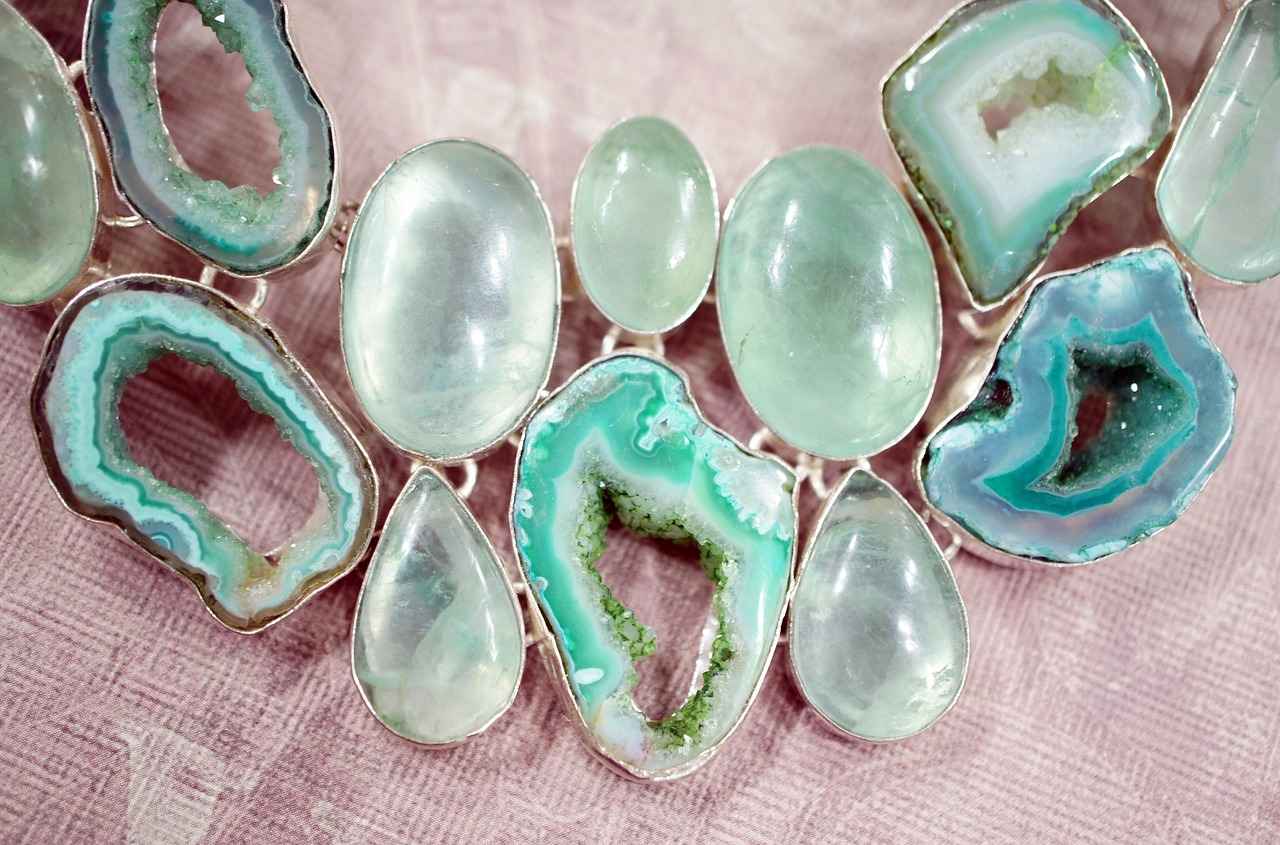
What Role Does Brand Reputation Play in Jewelry Value?
The role of brand reputation in determining jewelry value cannot be overstated. In the world of luxury goods, the name behind a piece of jewelry often serves as a hallmark of quality, craftsmanship, and exclusivity. Established brands frequently command premium prices, not just for their products, but for the trust and prestige they have cultivated over the years.
Brand reputation acts as a significant influencer in the jewelry market. When consumers invest in jewelry, they are often purchasing more than just a physical item; they are buying into a lifestyle and an emotional connection that established brands offer. This connection is built on years of delivering high-quality products and exceptional customer service.
Luxury brands such as Tiffany & Co. and Cartier have become synonymous with elegance and sophistication. These brands utilize their history and heritage to create an aura of exclusivity, making their pieces highly desirable. The iconic status of these brands often leads to higher resale values, as collectors and investors seek to own a piece of their legacy.
While established brands dominate the market, emerging brands have the potential to carve out their niche by focusing on unique designs and high-quality materials. As these brands gain recognition, they can attract a loyal customer base, which can lead to increased brand equity and appreciation in value over time. For instance, brands that emphasize sustainability and ethical sourcing are resonating with a new generation of consumers, thereby enhancing their market presence.
- Quality Assurance: Established brands have rigorous quality control processes that ensure each piece meets high standards.
- Customer Loyalty: A strong brand reputation fosters a loyal customer base, leading to repeat purchases and referrals.
- Marketing and Branding: Effective marketing strategies enhance brand visibility and desirability, influencing consumer perceptions.
- Heritage and Craftsmanship: Brands with a rich history often emphasize their artisanal craftsmanship, which adds to their allure.
The resale market for jewelry is heavily influenced by brand reputation. Pieces from renowned brands typically retain their value better than those from lesser-known names. This is due to the perceived value associated with established brands, where collectors are willing to pay a premium for authenticity and quality. For example, a vintage piece from a well-known brand may appreciate significantly over time, making it a sound investment.
Despite the benefits, there are risks involved with brand reputation. A scandal or negative publicity can tarnish a brand’s image, leading to a decline in demand and value. Additionally, the market can be volatile, with consumer preferences shifting over time. Brands that fail to adapt may find their value diminishing.
In conclusion, the brand behind a piece of jewelry plays a pivotal role in its overall value. Established brands benefit from a strong reputation, which translates into higher prices and consumer trust. However, emerging brands also have opportunities to compete by offering innovative designs and aligning with contemporary values. Understanding the dynamics of brand reputation can aid both collectors and investors in making informed decisions in the jewelry market.
How Do Luxury Brands Affect Market Prices?
The jewelry market is often influenced by a variety of factors, but none are as significant as the role played by luxury brands. These brands, such as Tiffany & Co. and Cartier, have established themselves as leaders in the industry, and their influence extends far beyond their own collections. In this section, we will explore how luxury brands affect market prices and the implications for collectors and investors.
Luxury brands are synonymous with quality, prestige, and exclusivity. Their iconic status is built on years of heritage, craftsmanship, and marketing. Consumers often associate these brands with high value, which can drive demand and, consequently, prices upward.
The reputation of a luxury brand plays a crucial role in determining the market price of its jewelry. Established brands like Tiffany & Co. and Cartier have a long-standing history of quality that instills confidence in buyers. This trust translates into higher prices, as consumers are willing to pay a premium for pieces that carry the brand’s name.
Luxury brands invest significantly in high-quality craftsmanship. Each piece is meticulously crafted, often by skilled artisans. This attention to detail not only enhances the aesthetic appeal but also adds intrinsic value. Jewelry from these brands is often viewed as an investment, with many pieces appreciating over time due to their superior craftsmanship.
Exclusivity is another key factor in the pricing strategy of luxury brands. Limited edition collections or unique designs create a sense of urgency among buyers, driving demand. This scarcity can lead to significant price increases, especially in the secondary market, where collectors seek rare pieces.
While luxury brands dominate the market, emerging brands can still carve out a niche by offering unique designs and high-quality materials. As these brands gain recognition, their pieces may appreciate in value, attracting attention from collectors and investors alike. However, they often need to establish a strong brand identity and customer loyalty to compete effectively.
Market trends can significantly influence the pricing of luxury jewelry. For instance, a growing demand for sustainable and ethically sourced materials is reshaping consumer preferences. Brands that align with these values often see increased demand, which can positively impact their market prices.
Economic conditions play a vital role in the demand for luxury jewelry. In times of economic stability, consumers are more inclined to invest in high-end pieces. Conversely, during economic downturns, even established luxury brands may see a dip in sales and, subsequently, pricing. Understanding these dynamics is crucial for anyone looking to invest in jewelry.
For collectors, luxury brand jewelry is often seen as a safe investment. The combination of brand reputation, craftsmanship, and exclusivity makes these pieces highly desirable. Many collectors view such investments not just as adornments but as assets that can appreciate over time, adding to their overall portfolio.
In conclusion, the influence of luxury brands on market prices is multifaceted and profound. Their established reputations, commitment to quality craftsmanship, and ability to create exclusivity significantly affect how jewelry is valued in the marketplace. For collectors and investors, understanding these dynamics is essential for making informed decisions in the world of luxury jewelry.
Can Emerging Brands Compete in Value?
In the dynamic world of jewelry, emerging brands are carving out a niche by focusing on unique designs and high-quality materials. As these brands gain traction and recognition, their pieces not only attract attention but also have the potential to appreciate in value, making them appealing to both collectors and investors.
Emerging brands can thrive in the competitive jewelry market by leveraging several key factors:
- Creativity and Innovation: Unlike established brands that may adhere to traditional designs, emerging brands often push the boundaries of creativity. This innovation can lead to striking pieces that resonate with modern consumers.
- Quality Craftsmanship: Many new brands prioritize quality over quantity, ensuring that each piece is crafted with care and precision. This attention to detail can significantly enhance the perceived value of their jewelry.
- Ethical Production: With a growing consumer focus on sustainability, emerging brands that emphasize ethical sourcing and environmentally friendly practices can attract a dedicated customer base.
Jewelry that features unique designs is often more desirable. Emerging brands frequently offer limited edition collections or bespoke pieces that stand out in a crowded market. This exclusivity can lead to higher demand, as collectors and investors seek out one-of-a-kind items.
The choice of materials is crucial in determining the value of jewelry. Emerging brands that utilize high-quality metals and gemstones can produce pieces that not only look stunning but also hold their value over time. For instance:
- Precious Metals: Using gold, silver, or platinum can enhance a piece’s intrinsic value.
- Gemstone Quality: The clarity, cut, and rarity of gemstones significantly influence market worth.
As emerging brands build their reputation, they often establish a loyal customer base. This brand loyalty can lead to increased resale value as collectors seek to invest in pieces from brands they trust. A strong brand narrative, often centered around craftsmanship and ethical practices, can further enhance perceived value.
Market trends play a significant role in shaping consumer preferences. Emerging brands that stay ahead of trends, such as the shift towards sustainable jewelry, can position themselves favorably in the marketplace. By aligning their offerings with current consumer values, these brands often experience increased demand and appreciation for their pieces.
As emerging brands gain recognition, their jewelry can attract collectors and investors looking for the next big thing. The combination of unique designs, high-quality materials, and a compelling brand story creates a perfect storm for value appreciation. As these brands continue to evolve, they may very well become the luxury brands of tomorrow, making their pieces a sound investment.
In conclusion, the potential for emerging brands to compete in the jewelry market is strong. By focusing on creativity, quality, and sustainability, they can create pieces that not only appeal to consumers but also appreciate in value over time. Collectors and investors should keep a keen eye on these rising stars, as they may soon find themselves at the forefront of the jewelry industry.
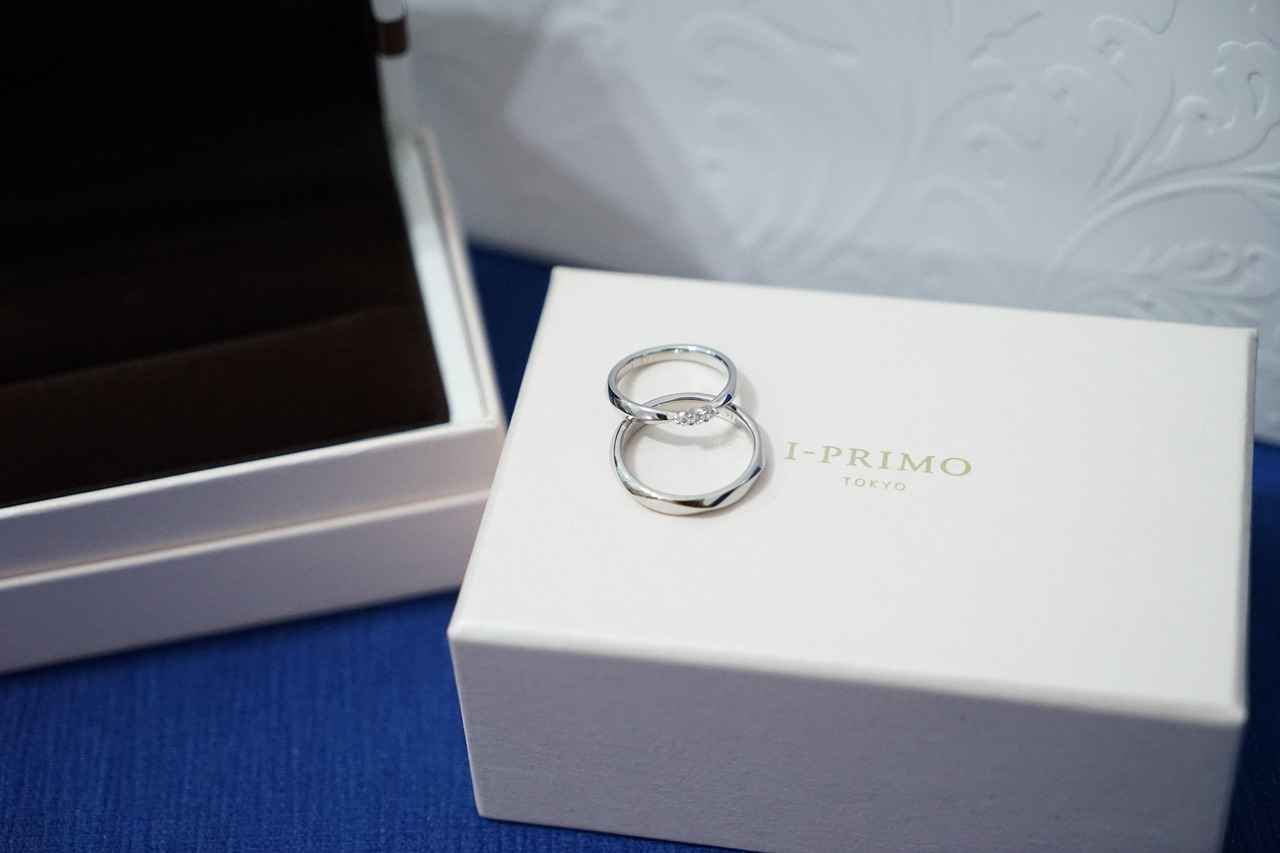
What Is the Impact of Market Trends on Jewelry Value?
Understanding the impact of market trends on jewelry value is essential for anyone interested in investing in or collecting jewelry. Market trends encompass a variety of factors, including economic conditions, fashion influences, and shifting consumer preferences. These elements can lead to significant fluctuations in both demand and pricing, ultimately affecting the overall value of jewelry.
The state of the economy plays a pivotal role in shaping the jewelry market. During periods of economic growth, consumers often feel more confident in their financial situations, leading to increased spending on luxury items, including jewelry. This heightened demand can drive prices up, making it a favorable time for investors. Conversely, during economic downturns, consumer spending typically decreases, resulting in lower demand for jewelry and potentially decreasing its market value.
Fashion trends have a profound impact on jewelry valuation. Styles that are in vogue can significantly increase the desirability of certain pieces. For instance, the resurgence of vintage and retro styles has led to a spike in demand for antique jewelry, often resulting in higher prices. Additionally, trends such as minimalism or bold statement pieces can dictate what consumers are looking for, thus influencing market values.
Consumer preferences are continually evolving, often driven by cultural shifts and social movements. Currently, there is a growing demand for sustainable and ethically sourced jewelry. Consumers are increasingly seeking pieces that align with their values, which has led to a rise in prices for jewelry made from recycled materials or ethically sourced gemstones. This trend not only affects pricing but also encourages brands to adopt more responsible practices in their sourcing and production.
Advancements in technology have also transformed the jewelry market. Online shopping has made it easier for consumers to access a wider range of products, leading to increased competition among retailers. Additionally, the rise of social media platforms has allowed brands to showcase their jewelry to a global audience, impacting consumer preferences and demand. Influencers and celebrities can sway public opinion, causing certain styles or brands to become highly sought after, which in turn affects their market value.
Global events, such as political changes, natural disasters, or health crises, can have immediate and profound effects on market trends. For example, during the COVID-19 pandemic, many consumers shifted their spending habits, with a notable increase in demand for online jewelry purchases. Such shifts can lead to price fluctuations and changes in consumer behavior, highlighting the importance of staying informed about global events that may impact the jewelry market.
Looking ahead, it is essential to monitor emerging trends that could influence jewelry value. As sustainability becomes a more significant concern for consumers, brands that prioritize eco-friendly practices may see increased demand. Additionally, technological innovations, such as virtual try-on features and augmented reality, are likely to shape consumer experiences and preferences. Staying abreast of these developments will be crucial for collectors and investors aiming to navigate the evolving jewelry landscape.
In summary, market trends are a vital component in determining jewelry value. By understanding the interplay between economic conditions, fashion influences, consumer preferences, and technological advancements, individuals can make informed decisions regarding their jewelry investments.
How Do Economic Conditions Affect Jewelry Demand?
The jewelry market is significantly influenced by various economic conditions, which can either bolster or hinder consumer purchasing power. Understanding these dynamics is crucial for both buyers and investors in the jewelry sector. This section delves into how economic stability and downturns impact jewelry demand and sales.
When the economy is thriving, consumer confidence tends to rise. This increased confidence often translates into higher discretionary spending, and jewelry is a popular choice for such expenditures. People are more willing to invest in luxury items like jewelry when they feel secure in their financial situation. This phenomenon can be attributed to several factors:
- Increased Disposable Income: In a stable economy, individuals typically experience growth in their salaries and job security, leading to more disposable income that can be allocated to luxury purchases.
- Positive Market Sentiment: Economic growth often correlates with a general sense of optimism, encouraging consumers to indulge in high-end purchases, including jewelry.
- Investment in Assets: Jewelry is often seen as a tangible asset. In prosperous times, consumers may view jewelry not just as adornment but as a valuable investment that can appreciate over time.
Conversely, during economic downturns, the jewelry market often experiences a significant decline in demand. Factors contributing to this reduction include:
- Reduced Consumer Spending: Economic uncertainty leads to tighter budgets, causing consumers to prioritize essential expenditures over luxury items.
- Decline in Confidence: A lack of confidence in the economy can deter consumers from making significant purchases, especially in markets where jewelry is viewed as a luxury.
- Investment Hesitation: During tough economic times, people may be less inclined to invest in jewelry, viewing it as a non-essential item. This hesitation can lead to a decrease in overall market value.
Several economic indicators can provide insights into potential trends in the jewelry market. These indicators include:
- Consumer Confidence Index (CCI): A high CCI often correlates with increased jewelry sales, while a low CCI may signal a downturn in demand.
- Unemployment Rates: Lower unemployment rates typically enhance consumer spending power, positively impacting jewelry sales.
- Inflation Rates: Inflation can affect purchasing power; if prices rise significantly, consumers may cut back on luxury items like jewelry.
Long-term economic shifts can have profound effects on the jewelry market. For example, sustained economic growth can lead to a robust demand for luxury items, driving up prices and enhancing the overall value of jewelry. On the other hand, prolonged economic instability can result in a stagnant or declining market, where values may decrease due to reduced demand.
Investors and collectors should remain informed about economic conditions and trends. By understanding how these factors influence consumer behavior, they can make more informed decisions regarding their jewelry investments. Ultimately, the interplay between economic conditions and jewelry demand highlights the importance of staying attuned to market dynamics.
What Trends Are Currently Shaping the Jewelry Market?
The jewelry market is undergoing a significant transformation, driven by evolving consumer preferences and values. In recent years, there has been a noticeable shift towards sustainability and ethical practices within the industry. This article delves into the current trends shaping the jewelry market, with a focus on sustainable materials, ethical sourcing, and the impact of these factors on consumer demand.
As consumers become more environmentally conscious, sustainability has emerged as a key factor influencing purchasing decisions. Jewelry brands that prioritize sustainable practices, such as using recycled metals and ethically sourced gemstones, are gaining traction among eco-aware shoppers. This shift is not merely a trend; it reflects a broader societal movement towards responsible consumption.
Consumers today are increasingly concerned about the origins of the products they purchase. Ethically sourced materials, which ensure fair labor practices and minimize environmental impact, are becoming a priority. Jewelry crafted from conflict-free diamonds and responsibly mined gemstones resonates with buyers who value transparency and integrity in their purchases.
Certifications such as the Responsible Jewelry Council and Fair Trade can significantly enhance a piece’s value. These certifications provide assurance that the materials used in the jewelry adhere to strict ethical and environmental standards. As awareness grows, pieces bearing such certifications often see increased demand and appreciation.
Technology plays a pivotal role in advancing sustainable practices in jewelry production. Innovations such as 3D printing and lab-grown diamonds are revolutionizing the industry. Lab-grown diamonds, in particular, offer a sustainable alternative to mined diamonds, appealing to environmentally conscious consumers without sacrificing quality or aesthetics.
Another trend gaining momentum is the demand for custom and personalized jewelry. Consumers are increasingly seeking unique pieces that reflect their individual styles and stories. Custom jewelry allows for greater creativity and personal expression, making it more desirable and often leading to higher appreciation in value over time.
Social media platforms, particularly Instagram and TikTok, have become powerful tools for shaping jewelry trends. Influencers and celebrities showcase their favorite pieces, driving consumer interest and demand. This visibility can significantly impact the value of certain styles and brands, as followers seek to emulate their favorite personalities.
The future of the jewelry market appears to be firmly rooted in sustainability and ethical practices. As more consumers prioritize these values, brands that align with these principles are likely to thrive. The appreciation of jewelry that embodies sustainability and ethics will continue to rise, making it a wise investment for those looking to enter the market.
In conclusion, the jewelry market is evolving rapidly, with sustainability and ethical sourcing at the forefront. Brands that embrace these trends not only cater to changing consumer preferences but also position themselves for long-term success in a competitive landscape. As awareness grows, the demand for sustainable and ethically sourced jewelry will likely continue to increase, influencing market dynamics and investment potential.
Frequently Asked Questions
- What factors influence the value of jewelry?
The value of jewelry is influenced by several key factors, including the quality of materials used, the level of craftsmanship, brand reputation, and current market demand. Each of these elements plays a crucial role in determining how much a piece is worth.
- How do gemstones affect jewelry valuation?
Gemstones are vital to jewelry value. Their rarity, cut, clarity, and color significantly impact their market worth. High-quality, rare gemstones can dramatically increase a piece’s overall value, making them a critical consideration for collectors.
- Does brand reputation really matter?
Absolutely! The brand behind a piece can greatly influence its value. Established luxury brands often command higher prices due to their reputation for quality and craftsmanship, while emerging brands can also gain traction by offering unique designs.
- Can economic trends affect jewelry prices?
Yes, economic conditions play a significant role in jewelry demand and pricing. In times of economic stability, consumers tend to spend more on luxury items, including jewelry, while downturns can lead to reduced demand and lower market values.
- What is the importance of craftsmanship in jewelry?
High-quality craftsmanship is essential as it enhances the desirability and value of a piece. Attention to detail and unique designs can set a piece apart, making it more appealing to collectors and investors alike.

